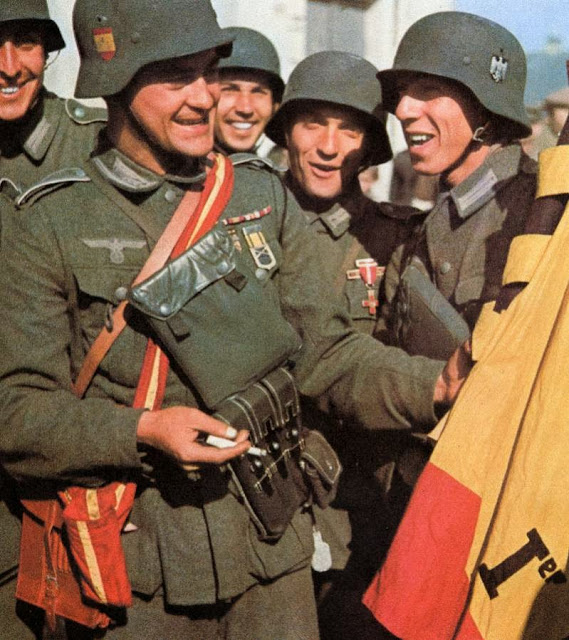Two Deutsche Afrikakorps Panzer IV ausf F including turmnummer (turret number) 413 pass a knocked-out captured Carden Lloyd Universal Carrier Mark 1 serial number T33417 armed with a Boys .55 caliber (13.9mm) anti-tank gun. The Universal Carrier is painted in the Caunter camouflage scheme, which used grey, blue, black, sand, and brown paint, or whatever was available, to form straight angular lines that were thought to "dazzle" whomever saw the vehicle in the desert, making it hard to judge size and distance. The Carrier has a Nazi flag over it to prevent an air attack by friendly German aircraft; this was common practice to mark captured vehicles with the Swastika flag
Source:
http://www.worldwar2database.com/gallery3/index.php/wwii0137






























